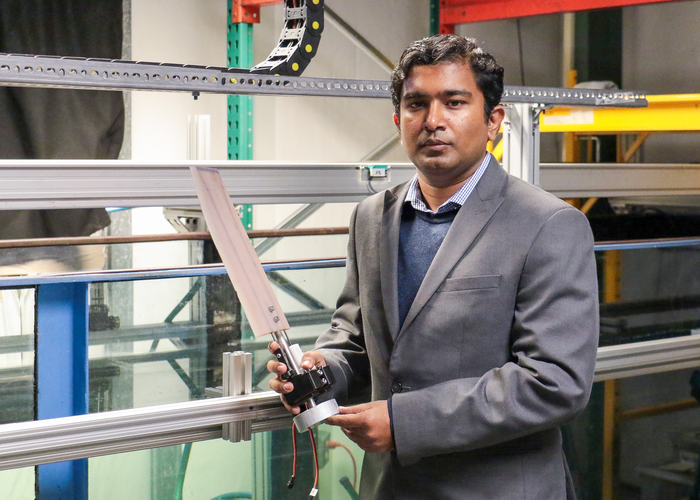A researcher at University of Central Florida is leading a three-year research project to study bird wings and their stability during airflow disturbances. The goal is to uncover the secrets of bird stability and engineer a comparable solution for unmanned aerial vehicles (UAVs) and micro air vehicles (MAVs) that can also retain control during turbulence.
Assistant Professor Samik Bhattacharya and his team are 3D printing wings made of black Agilus plastic to mimic the collapsible structure of real bird wings. These will be tested in high turbulence through a state-of-the-art gust generator system funded by the U.S. Air Force Office of Scientific Research (AFOSR) grant.

The wings will be placed in a towing tank with a sensor that can measure the lift and drag forces. Images of the flow field will also be captured with the aid of high-speed cameras. Along with the gust generator, the AFOSR grant will also fund the hiring of graduate students to work on this project.
“Birds have perfected the art of unsteady flow control through millions of years of evolution,” said Bhattacharya.
“They don’t use any separate flaps or slats; rather, they morph their wings and use their feathers to achieve similar feats. However, we don’t know how to utilize similar morphing capabilities in man-made flight vehicles.”
This research is significant as turbulence in smaller aircraft, such as UAVs or MAVs, can severely affect the stability of these vehicles and cause them to lose control. By studying bird wings, Bhattacharya hopes to improve the stability of unmanned aerial vehicles, making them safer and more reliable.
Come and let us know your thoughts on our Facebook, Twitter, and LinkedIn pages, and don’t forget to sign up for our weekly additive manufacturing newsletter to get all the latest stories delivered right to your inbox.









